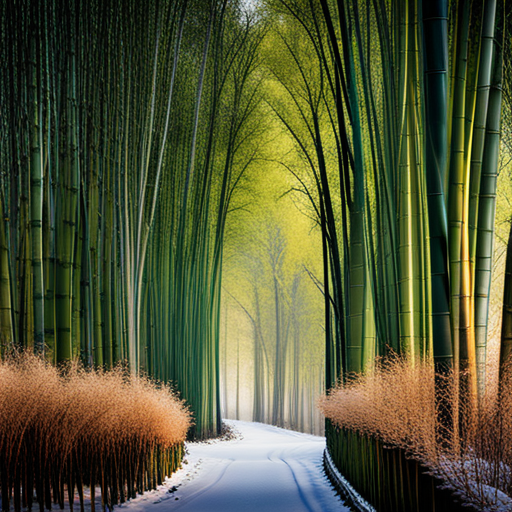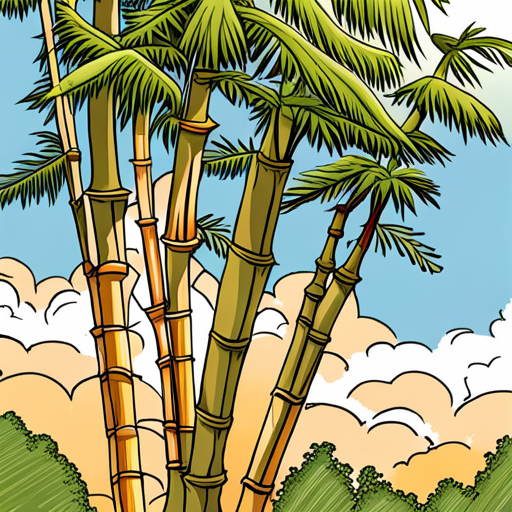Bamboo Selection and Care Tips for Wisconsin Gardens
Bamboo, a versatile and visually appealing plant, can be successfully cultivated in various regions of Wisconsin. However, the selection of bamboo species depends on the specific location within the state due to its varying plant hardiness zones.
Wisconsin spans USDA plant hardiness zones 3b to 5b, with zone 4 offering a more limited choice of bamboo. In zones 5a and 5b, a decent selection of hardy bamboo species is available.
This article aims to provide valuable insights into the selection and care of bamboo plants in Wisconsin gardens. It will discuss the cold tolerance and climate suitability of different bamboo species, emphasizing their adaptability to specific zones. Additionally, it will offer essential care and maintenance tips to ensure the successful growth and longevity of bamboo plants.
Whether you are an avid gardener or a beginner, this article will serve as a comprehensive guide to help you make informed decisions when selecting and caring for bamboo in your Wisconsin garden.
Contents
- 1 Our Highlighted Points
- 2 Bamboo for Different Zones
- 3 Cold Tolerance and Climate Suitability
- 4 Care and Maintenance Tips
- 5 – Could Drought Tolerant Bamboo also Thrive in Wisconsin Gardens?
- 6 Frequently Asked Questions
- 6.1 Can bamboo be grown in containers in Wisconsin?
- 6.2 What are some bamboo species suitable for zone 4 in Wisconsin?
- 6.3 How should bamboo be protected from winter winds and freezing temperatures?
- 6.4 What should be done if bamboo branches are covered in frozen snow?
- 6.5 How should running bamboo be controlled to prevent spreading?
Our Highlighted Points
- The choice of bamboo species in Wisconsin depends on the USDA plant hardiness zone.
- Phyllostachys nuda, Phyllostachys Aureosulcata ‘Yellow Groove’, and Phyllostachys Bissetii are suitable for zone 4 in Wisconsin.
- Phyllostachys heteroclada ‘Purpurata’ thrives in wet conditions.
– Proper care includes planting bamboo in a wind-protected spot, watering generously, mulching in winter, and protecting container plants during the cold season.
Bamboo for Different Zones

The selection of bamboo species for Wisconsin gardens depends on the specific USDA plant hardiness zone, with a wider range of options available in zones 5a and 5b compared to zone 4 or zone 3 where bamboo can only be grown in containers.
In zones 5a and 5b, gardeners have a decent selection of bamboo species to choose from, including Phyllostachys Aureosulcata ‘Yellow Groove’ and Phyllostachys Bissetii, which are suitable for zone 4 as well. Phyllostachys nuda, also known as Snow Bamboo, is another hardy bamboo species that can thrive in zone 4.
For those in zone 3, bamboo can still be grown in containers, but it cannot be planted in-ground. When growing bamboo in containers, it is important to provide winter protection by moving the containers to a warmer place like a greenhouse or garage, as containers freeze harder and faster than in-ground soil.
Cold Tolerance and Climate Suitability

Cold tolerance and climate suitability are important factors to consider when choosing bamboo for planting in Wisconsin. Bamboo species vary in their ability to withstand cold temperatures and adapt to different climates. Here are some key points to keep in mind:
- Climate adaptation: Bamboo species that are native to colder regions or have a high cold tolerance are more suitable for Wisconsin’s climate. These species have evolved to withstand freezing temperatures and can survive the harsh winters.
- Cold hardiness: Look for bamboo species that have been rated for USDA plant hardiness zones 3b to 5b, which cover most of Wisconsin. These species have been tested and proven to withstand the specific cold conditions in these zones.
- Consider the local climate: Different regions within Wisconsin may have slightly different climate conditions. It is important to choose bamboo species that are well-suited to the specific climate of your location within the state.
- Research and consult experts: To ensure the best success with bamboo in Wisconsin, research different species and consult with local experts or nurseries that specialize in bamboo. They can provide valuable advice on which species are most suitable for the local climate.
- Monitor and adapt: Once planted, regularly monitor the bamboo plants and make adjustments as needed. This may include providing additional protection during extreme cold spells or adjusting watering and mulching practices to ensure optimal growth and survival.
By considering the climate adaptation and cold hardiness of bamboo species, gardeners in Wisconsin can choose the right bamboo varieties that will thrive in their specific climate conditions.
Care and Maintenance Tips

To ensure optimal growth and maintenance of bamboo in Wisconsin gardens, it is important to implement proper care and maintenance techniques.
Mulching techniques play a crucial role in protecting the bamboo roots and maintaining soil moisture during the winter months. It is recommended to mulch generously around the base of the bamboo with a layer of organic material such as straw or wood chips. This will help insulate the roots from winter winds and prevent them from freezing.
Additionally, watering frequency is an essential aspect of bamboo care. During the summer, bamboo should be watered generously, especially if there is not much rainfall. It is recommended to water the bamboo once a week, ensuring that the soil is thoroughly soaked.
Fallen leaves can also be left around the base of the bamboo to provide further insulation and retain moisture during the summer months.
By following these care and maintenance tips, bamboo can thrive in Wisconsin gardens.
In this regard, you may like to read about this comprehensive guidance on growing red button ginger (Indian Head Ginger) with ease.
– Could Drought Tolerant Bamboo also Thrive in Wisconsin Gardens?
Drought tolerant bamboo care is a significant factor for Wisconsin gardeners looking to incorporate bamboo into their landscaping. While Wisconsin’s climate may present challenges, certain bamboo varieties have shown resilience in colder climates. By understanding the specific needs of drought tolerant bamboo care, gardeners can successfully cultivate bamboo in Wisconsin gardens.
Frequently Asked Questions
Can bamboo be grown in containers in Wisconsin?
Bamboo can be successfully grown in containers in Wisconsin. Benefits of using bamboo in container gardening include the ability to control its spread and protect it from harsh winter conditions. Tips for overwintering bamboo in containers include moving them indoors and providing adequate light and moisture.
What are some bamboo species suitable for zone 4 in Wisconsin?
Bamboo propagation techniques for zone 4 in Wisconsin include planting Phyllostachys nuda (Snow Bamboo), Phyllostachys Aureosulcata ‘Yellow Groove’, and Phyllostachys Bissetii. These bamboo species are suitable for the cold climate and offer landscaping opportunities in cold climates.
How should bamboo be protected from winter winds and freezing temperatures?
To protect bamboo from winter winds and freezing temperatures, it is important to mulch generously around the roots, providing insulation. Additionally, avoid breaking frozen snow on bamboo branches and consider moving potted bamboo indoors to a warmer location.
What should be done if bamboo branches are covered in frozen snow?
To prevent snow damage to bamboo plants, it is important not to break frozen snow on bamboo branches. This can cause damage to the branches. Instead, it is recommended to wait for the snow to melt naturally. Snow removal techniques for bamboo branches should be avoided to prevent potential harm to the plant.
How should running bamboo be controlled to prevent spreading?
Controlling bamboo spread involves managing running bamboo to prevent its excessive growth and spreading. This can be achieved by using a root barrier or regularly pruning the roots. Clumping bamboo is a suitable alternative as it spreads less and requires less control.

